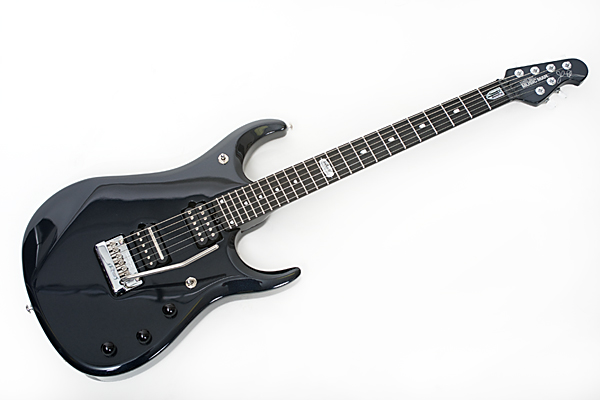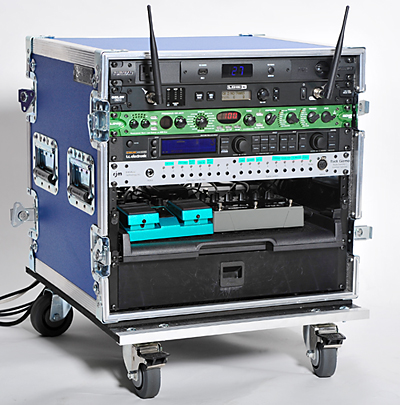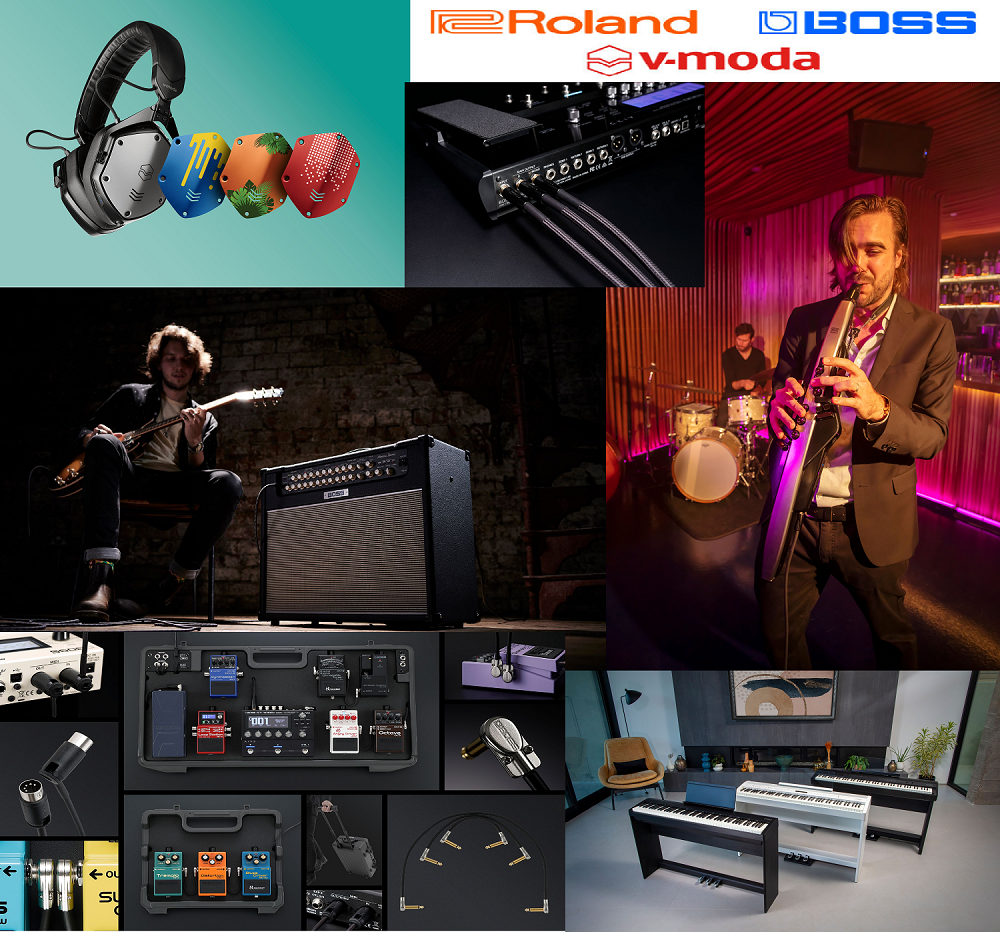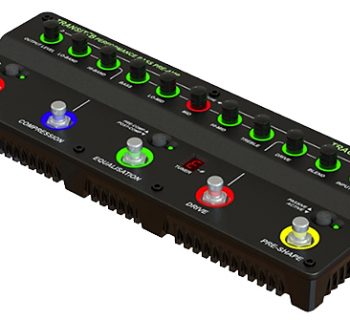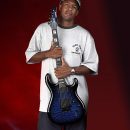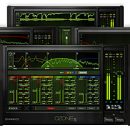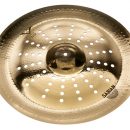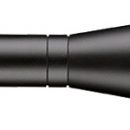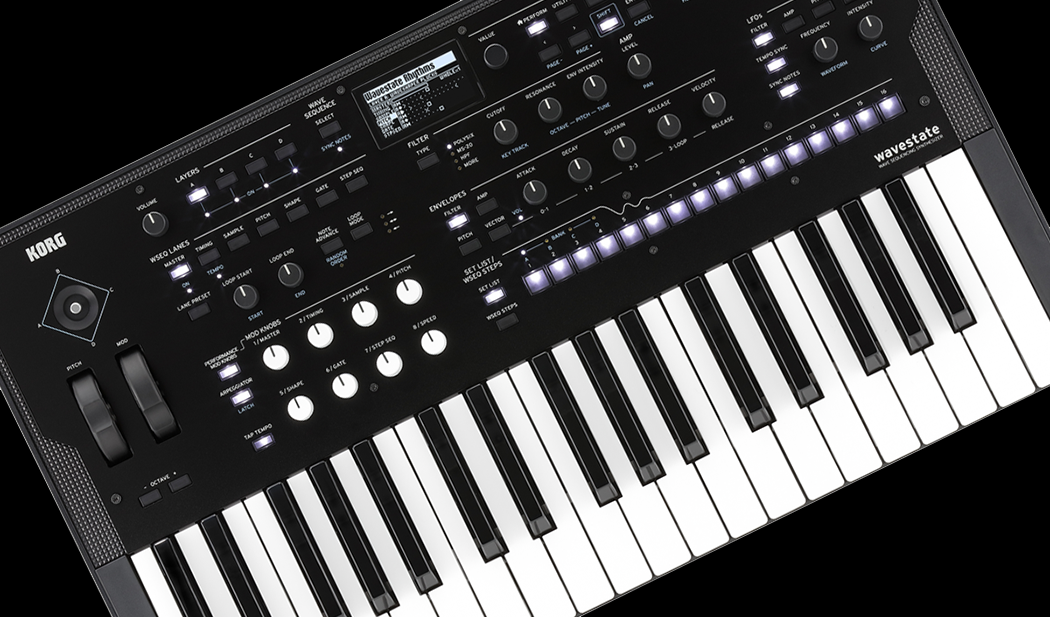 We’re big fans of Music Man guitars, especially the John Petrucci signature models. They deliver a versatile range of tones, superb playability, and the best implementation of Piezo acoustic output we’ve ever experienced on an electric guitar.
We’re big fans of Music Man guitars, especially the John Petrucci signature models. They deliver a versatile range of tones, superb playability, and the best implementation of Piezo acoustic output we’ve ever experienced on an electric guitar.
What started out as a single signature model for the prog metal virtuoso — the original Music Man JP6 — has since evolved into a family of instruments that each have their own subtleties, and the latest evolution of Petrucci’s remarkable guitar may very well be the finest iteration ever produced.
| Category | Value | Rating |
| Features | 20% | |
| Usability | 25% | |
| Sound | 25% | |
| Documentation & Support | 10% | |
| Price | 20% | |
| OVERALL RATING = 3.6, which earns it a WIHO Award! 3.6 stars or better: Outstanding, WIHO Award 3 stars or better: Worth considering 2 stars or better: Suited to specific needs 1 star or less: Not recommended |
||
The JPXI features some significant differences from the classic JP6 (reviewed here) that will make many players rejoice, especially the new neck profile, which offers a wider and flatter fretboard than all of the other guitars in the JP series. This single change will be the difference that compels some players to play this guitar, as the traditional JP neck was noticeably skinnier than some players cared for.
A superb guitar in every way, you don’t have to be a progressive rock shredmaster in order to benefit from the JPXI’s outstanding construction, superb playability, and beautiful tone. But as with the JP6 and other models in the family, if you are indeed shredworthy, this guitar will definitely not disappoint.
Features
JPXI Body DetailThe Music Man JPXI is a gorgeous guitar that takes black, err, we mean Onyx, to a whole new level of darkness. While other black guitars sport a solid finish with a gloss topcoat, the JPXI’s finish is infused with metal flakes, giving it a very subtle sparkle. It’s hard to tell from most product photographs just how rich this black finish really is, but take our words for it: this is no ordinary black finish.
The guitar is part of the Ball Family Reserve (BFR) line, which means that it is produced in more limited quantities than the standard production models, though all Music Man guitars are made in the company’s Northern California factory.
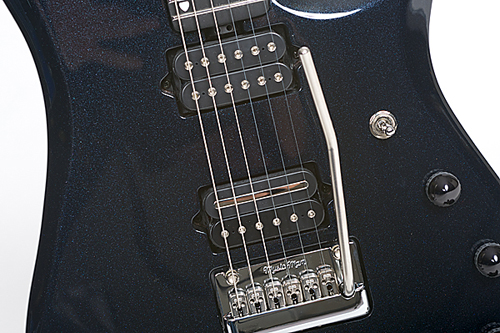 The original JP6 impressed us with its light weight — and although the Music Man specs list the JPXI at under 7.5 pounds, the guitar strikes us as being slightly heavier than the original JP6.
The original JP6 impressed us with its light weight — and although the Music Man specs list the JPXI at under 7.5 pounds, the guitar strikes us as being slightly heavier than the original JP6.
The JPXI features an alder body like the JP6, but with a mahogany tone block and a maple top. The body has been very subtly tweaked, too. It’s a tiny bit larger than the JP6, with slightly elongated and thinner upper and lower horns.
The neck is where the major differences between old and new take place. The 24-fret, 25.5” scale neck here is mahogany with an ebony fretboard (the JP6 is maple/rosewood), and the radius has increased from 15” on the JP6 to 20” on the JPXI. It remains 1 1/16” wide at the nut and 2 ¼” at the last fret, and the frets are medium jumbo size. The neck features John Petrucci’s custom shield inlays plus a special BFR emblem at the twelfth fret. The final big change: rather than a familiar Music Man natural wood neck finish with wax and oil, the JPXI neck is black from head to toe and has a high gloss polyester finish.
The JPXI presently features two direct-mounted humbucking pickups: a DiMarzio Crunch Lab in the bridge and a DiMarzio Liquifire at the neck. A three-way toggle switch provides the following three voices: bridge pickup, neck pickup, and in the middle, both pickups together. Wait! That can’t be! All of Petrucci’s guitars have a special middle position in which only the inside poles from each pickup are utilized. What gives? Well, what isn’t documented on the Music Man website is a subtle feature change made to the JPXI wiring that sets it apart from all previous Petrucci guitars (even his older Ibanez signature line): a coil tap! Pull up on the tone knob and you’ll get Petrucci’s classic middle position sound with the inside pickup poles wired in parallel. The coil tap only applies to the middle position, though. Pickup positions 1 and 3 are always full humbucking.
Underneath the string saddles reside piezo electric/acoustic pickups. A three-way selector on the horn of the body selects between DiMarzio-only, Piezo-only, or both.
Output from this guitar has every option you could hope for. Two output jacks on the side of the guitar provide numerous connectivity options: with two mono cables, one output contains the magnetic output (DiMarzio) and the other has the piezo output. With only one mono cable, both sets of pickups are routed to your amp, and the three-way toggle switch on the horn controls which output you hear (or both, blended). Finally, with one stereo TRS cable, both the DiMarzios and the Piezos share a single cable, but with a breakout box at the other end, you can then split and route your signals to different amps.
The guitar has two knobs for the magnetic pickups’ output volume and tone, and a third knob for volume control of the Piezos. Additionally, behind the guitar there are recessed screws for fine-tuning the bass, treble, and mix of the piezo output.
Schaller M6 locking tuners and a custom John Petrucci floated tremolo complete the package, and the guitar now ships standard with .10s instead of .09s.
The guitar ships in a hard case specially designed to store the guitar without having to remove the tremolo arm from the bridge of the guitar — a nice detail.
Usability
 Fit and finish on our JPXI were outstanding, though the guitar shipped with average height action that we preferred to lower just a bit. Although the body felt a bit heavier than the JP6, it was still equally well-balanced and extremely comfortable to play from both standing and seated positions.
Fit and finish on our JPXI were outstanding, though the guitar shipped with average height action that we preferred to lower just a bit. Although the body felt a bit heavier than the JP6, it was still equally well-balanced and extremely comfortable to play from both standing and seated positions.
The neck. When Ernie Ball first applied a traditional finish to the neck on the JP6 Ball Family Reserve model, the JPX, and again on the JPXI, we actually busted John Petrucci’s chops about it, saying “how could you?” We were of course referring to the departure from Music Man’s amazing natural wood neck finishes that feature a blend of wax and oil. But he told us not to fear, and he was absolutely right.
If you’ve ever played those iconic rock guitars with a high gloss neck finish that is tacky or sticky to the touch, and which rubs off onto your hands and discolors after only weeks of use, then like us, you may have developed a huge distaste for the style. In the case of the Music Man neck treatment, however, fear not. The high gloss polyester finish on this neck is fantastic. It isn’t sticky, it never slowed us down, it never felt skanky after working up a sweat at a live gig, and it isn’t showing signs of wear. We can now say from firsthand experience that Ernie Ball does killer neck finishes both “au natural” as well as with a high-gloss treatment.
The new neck radius is a welcome change to the guitar. Although we easily adjusted to the skinny JP6 neck, the narrow size prevented complete and unwavering adoration for the instrument. With the large 20” radius, the neck still has a familiar C shape, and it retains shred-worthy proportions. Throw in the new ebony fretboad and high-gloss neck finish and you have an ultimate weapon of mass destruction in your hands. Coupled with the medium jumbo frets, the guitar delivers speed and comfort, and it felt even easier to make bluesy note bends here than it was on the narrower JP6 neck.
While some players prefer five way switches, or the addition of coil tap/split switches to a humbucker-loaded guitar for more options, we share John’s love of simplicity – three distinct tones from the pickup selection are good enough for us.
Using the piezo pickup remains a best-in-class treat. We played the guitar both with a standard mono instrument cable as well as with two cables running to separate amps for our acoustic and electric tones. The volume control for the piezo pickup made it easy to fine tune levels without having to touch the amp. When used in the mono cable setting, we just left the volume up all the way and simply selected between magnetic or Piezo output, or a blend of the two through a single amp.
What makes the Piezo implementation here better than every other electric guitar we’ve played? Besides the multiple output options, the three-way switch on the upper horn of the guitar is the significant distinguishing feature. In the Up position, the guitar outputs only Piezo acoustic sound. In the Down position, you get only magnetic tone from the DiMarzio pickups. And in the middle, the guitar outputs both magnetic and Piezo acoustic tones. With the switch in this location on the guitar body, we could play the verse of a song with our “acoustic guitar” and then switch to our high-gain electric guitar sound in the chorus in the span of an eight note. By contrast, on one of our other favorite Piezo-loaded electric guitars, the switch bearing similar functionality is buried within the cluster of instrument controls/knobs, making it impossible to switch in real-time while playing from one section of a song into the next.
The vintage tremolo has proved a successful design since its inception on the JP6. String changes were a breeze (no double-locking system to slow us down or balls in need of removal), and tuning stability was excellent. The soft touch of the floating tremolo also made it easy to play vibrato-infused rhythm parts.
Sound
We played the Music Man JPXI through two tube amps – a Mesa/Boogie Road King II and an ENGL Powerball II, each capable of both brutal and tight high-gain tones as well as sparkling clean tones and bluesy stuff in between.
The JPXI dishes out a very useful and diverse range of sounds that are well suited to a variety of styles from metal to funk to blues, but it definitely has a different sonic character than the JP6. In fact, we compared the two guitars directly during testing in order to identify the differences in tone that each of these DiMarzio-loaded machines possessed: the JPXI with its Crunch Lab and LiquiFire pickups vs. a stock JP6 with the D Sonic and its custom DiMarzio neck pickup (like an Air Norton but tweaked for optimal response from the JP6 guitar). We also threw a customized JP6 into the mix, where we replaced the D Sonic bridge pickup with a D Activator pickup.
Starting with some classic high-gain tones (think Dual Rectifier, modern voicing, or ENGL Powerball 2 channels 3 and 4), there was a noticeable different in tone between the JPX1 and the JP6. While the JP6 sound was sharp, it was on the thinner side of the tone spectrum, and it had some real bite to the sound thanks to a bright high end. By comparison, the new JPXI tone is thicker, creamier, and rounder, with less high end presence and a smoother, less jagged, type of tone.
The guitar had the same attack character as the JP6, which is to say a tight and immediate response, but the differences in thickness of tone as well as the high-end response were more pronounced than we expected when doing a head-to-head comparison. In our last interview with John Petrucci, he referred to his multiple guitars as providing “different spices in a rack,” (see the feature here) and we couldn’t agree more. We definitely heard these guitars being complimentary to each other in tone.
Moving on to clean tones, we tested the guitars spending a lot of time paying attention to the middle pickup position, which is different on the JPXI from the other guitars in the series. The JP6 exhibits a Strat-like tone in this position, with some good bell-like qualities and the ability to get that “quack” kind of tone happening. But with full humbucker tone in the middle position, not to mention the mahogany tone block, the JPXI gave us a jazzier tone that was bigger and rounder.
For clean work, while the JP6 tone is more like a Strat, the new JPXI’s tone leans more towards the Les Paul camp… until you pull up the tone control knob to active the guitar’s coil splitting feature. In this mode, only the inside poles from each pickup are used, and the JPXI delivered the familiar Strat-like spank. If you favor this glassy clean tone more (as we do), you might consider reverse wiring the coil split so that the default guitar behavior is to have the middle pickup wired traditionally (as found on other JP guitars) with the tone knob in its default In position.
In the neck position, we found Nirvana on the JPXI. No, we would never subject a guitar like this to grunge rock… we mean Holy Grail kind of tone. With high gain tones on our amps, the JPXI delivered exceptional, fluid lead tones, more so than the JP6, which has a brighter sound with some more metallic roughness to the sound. Pair this guitar with a Mark IIc+ and unleash your inner Santana. Or don’t. This guitar is more fun with a little bit of chorus and delay behind it for ruler-of-the-prog-metal kingdom kinds of playing.
While soloing, we noticed that the body and neck of the JPXI really resonated a lot more than the JP6, which had an almost sterile resonance by comparison. You could really feel the JPXI guitar while soloing.
Note definition/clarity while playing chords with complex voicings was excellent, and a subtle improvement over the stock JP6 (which is still good by all measures).
The output of the Crunch Lab and LiquiFire pickups is noticeably hotter than the output from the D Sonic and custom pickup of the JP6, but our clean tones remained clean without breaking up (unless intentionally desired). If your amp has less gain on tap than our high gain tone machines, the extra punch from these pickups may help you achieve slightly heavier tones.
Want the best of both worlds on a budget? We found that replacing the JP6’s D Sonic bridge pickup with a DiMarzio D Activator made a subtle change to the guitar’s output that made it fall nicely in between the JP6 and JPXI. It was a bit smoother, and slightly more excitable when playing harmonics, but it still preserved the bright, chimey middle position clean tones that we like in the JP6.
The Piezo acoustic output from the JPXI sounded similar to the JP6, which is to say very good. Our sound was convincingly like that from a miked acoustic guitar both through our PA system as well as through a guitar amp set to a clean channel. It didn’t have the full depth or richness that a great acoustic guitar might have, and the high end had a slight “clank” to it that is common with Piezo pickup elements, but in reality, nobody runs their Piezo output straight from the guitar to the PA. We love the sound from these Music Man guitars running the Piezo output into an L.R. Baggs Para Acoustic DI (see review here) and then into our PA system. John Petrucci runs his Piezo output into a Fishman Aura DI.
Obviously, the most kick-ass thing you can do with a guitar like this is run the DiMarzio pickups to your high-gain amp and the Piezo output to your PA. Real-time layering of acoustic and electric tones is within your reach here, and once you try it, it’s one of those instantly addicting things you won’t ever want to have missing from your guitar rig. It’s also especially handy for anyone playing Zeppelin covers, or other songs where acoustic guitar parts were layered with electrics. The instant switching from acoustic output to electric output (courtesy of the smart control layout) is fantastic for playing your favorite monster ballads. But seriously, if you’re going to play this wickedly awesome guitar, lose the mullet already.
If you would like to hear this guitar, all of the audio samples recorded for our review of the ENGL Powerball II amplifier were performed using the JPXI.
Documentation and Product Support
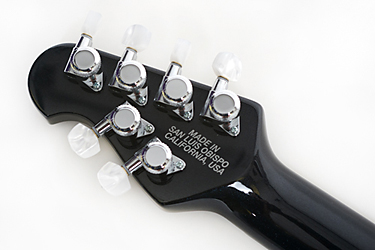 The JPXI comes with a sheet of paper that illustrates the various controls, and given that the truss rod is accessible without any special tools or covers to remove, there’s not much more we needed to know about the instrument. Tips on guitar care would be nice, but we have made the assumption that using Ernie Ball Wonder Wipes (see review here) should perform all the cleaning we need without putting the instrument at risk.
The JPXI comes with a sheet of paper that illustrates the various controls, and given that the truss rod is accessible without any special tools or covers to remove, there’s not much more we needed to know about the instrument. Tips on guitar care would be nice, but we have made the assumption that using Ernie Ball Wonder Wipes (see review here) should perform all the cleaning we need without putting the instrument at risk.
Price
The Music Man JPXI ($3,500) sells for just under $2,500 and includes a vintage hard-shell case, which we think is an excellent price for this guitar. If you’re just looking to get into the JP line but can’t afford the flagship BFR model, the JP6 guitar can be found starting at $1,000 less.
Other Comments
With so many models in the product line, it may seem a bit bewildering to figure out how the various models differ from one another. There is no wrong choice among them — it’s just slightly different seasonings. We’ve compiled all of the JP guitars into the chart below for easy reference. All of the guitars feature the same controls, hardware, and pickups, with the one difference being that the JPXI guitars default to a full-humbucking middle pickup position with a coil tap feature to access the familiar inside-poles-only tone of the other guitars in the series.
| JP6 | BFR 6 | BFR Baritone | JPX6 | JPXI6 | |
| Body | basswood | alder with bookmatched maple top, mahogany tone block, or Koa top w/mahogany body | alder with bookmatched maple top, mahogany tone block, or Koa top w/mahogany body | Chambered alder with maple top, mahogany tone block | Alder with maple top, mahogany tone block |
| Neck | maple | mahogany | mahogany | mahogany | mahogany |
| Scale Length | 25.5" | 25.5" | 27.5" | 25.5" | 25.5" |
| Fretboard | rosewood | rosewood (maple body) or ebony (Koa top) | rosewood | ebony | ebony |
| Neck Radius | 15" | 15" | 15" | 15" | 20" |
| Neck Width (nut, last fret) | 1-7/8", 2-7/16" | 1-11/16", 2.25" | 1-11/16", 2.25" | 1-11/16", 2.25" | 1-11/16", 2.25" |
| Neck Finish | oil + wax blend | high gloss polyester | high gloss polyester | high gloss polyester | high gloss polyester |
| Frets | high profile, wide | high profile, wide | high profile, wide | jumbo profile, wide | medium jumbo |
| JP7 | BFR 7 | JPX7 | JPXI7 | ||
| Body | basswood | alder with bookmatched maple top, mahogany tone block, or Koa top w/mahogany body |
n/a
|
Chambered alder with maple top, mahogany tone block | Alder with maple top, mahogany tone block |
| Neck | maple | mahogany | mahogany | mahogany | |
| Scale Length | 25.5" | 25.5" | 25.5" | 25.5" | |
| Fretboard | rosewood | rosewood | ebony | ebony | |
| Neck Radius | 15" | 15" | 15" | 20" | |
| Neck Width (nut, last fret) | 1-11/16", 2.25" | 1-7/8", 2-7/16" | 1-7/8", 2-7/16" | 1-7/8", 2-7/16" | |
| Neck Finish | oil + wax blend | high gloss polyester | high gloss polyester | high gloss polyester | |
| Frets | high profile, wide | high profile, wide | jumbo profile, wide | medium jumbo | |
Contact Information
Ernie Ball Music Man
www.music-man.com
Evaluation Short-List
Parker MaxxFly and Fly Deluxe
Brian Moore iGuitar 91.13
Gibson Alex Lifeson Les Paul Axcess

